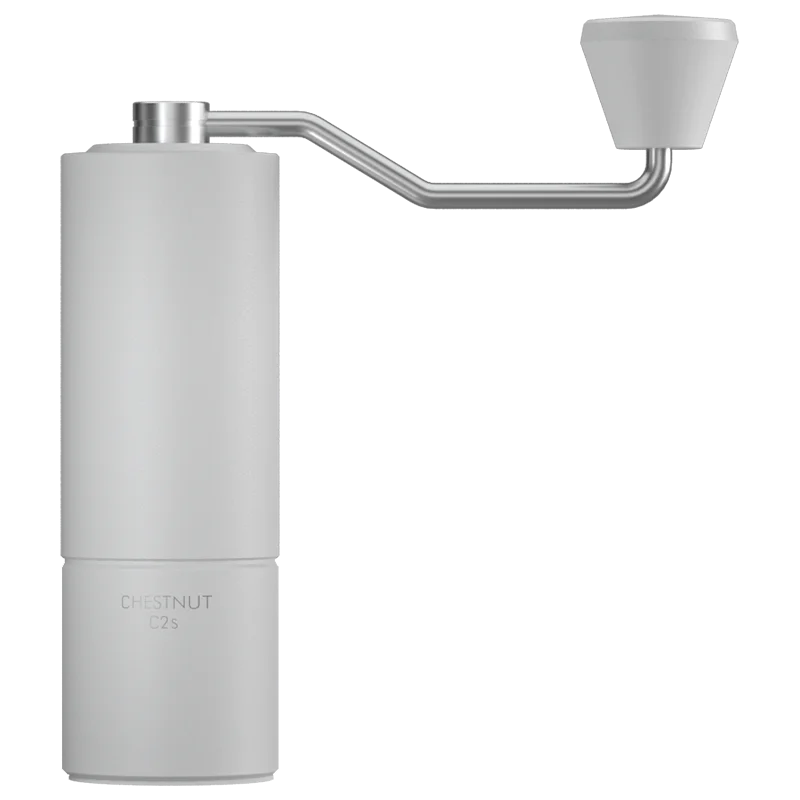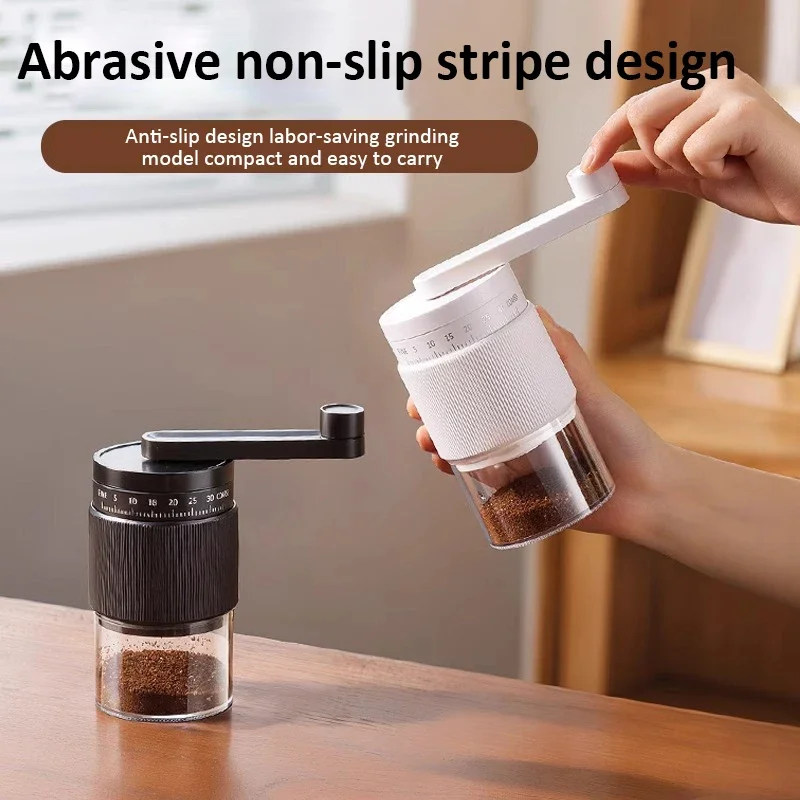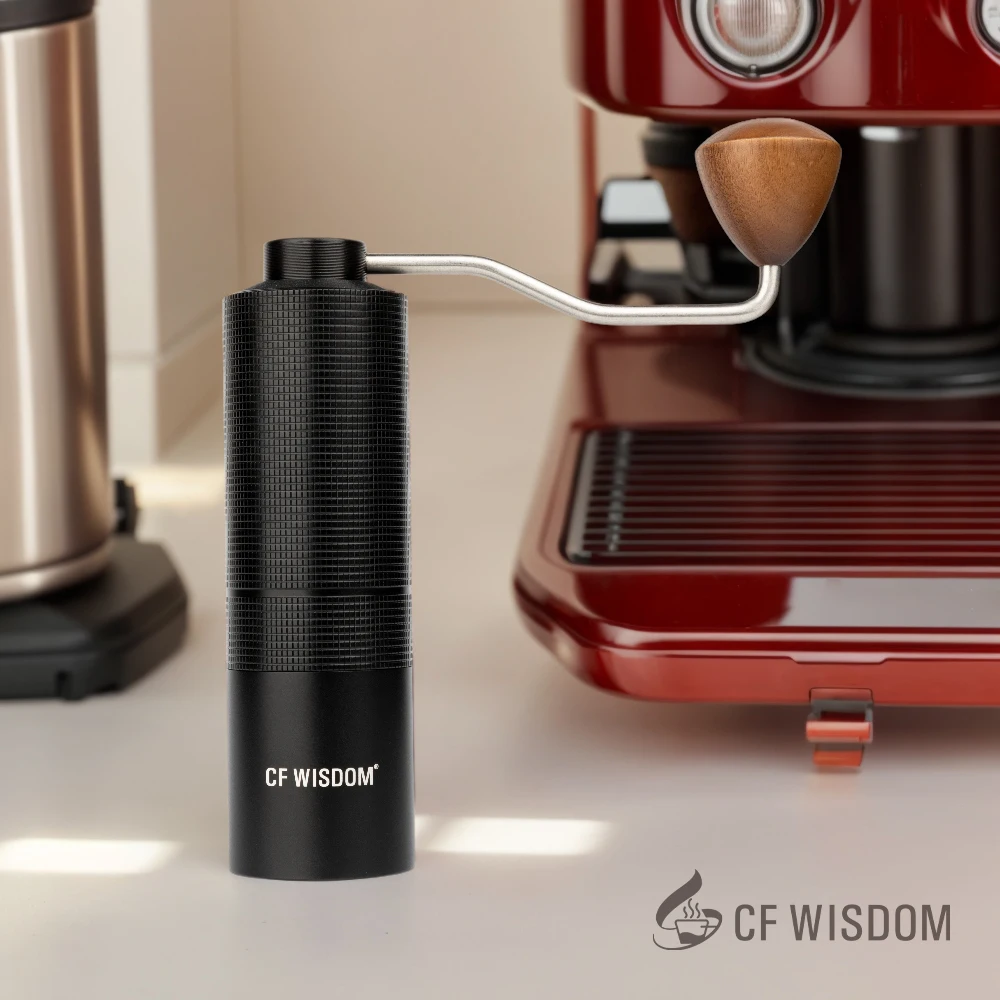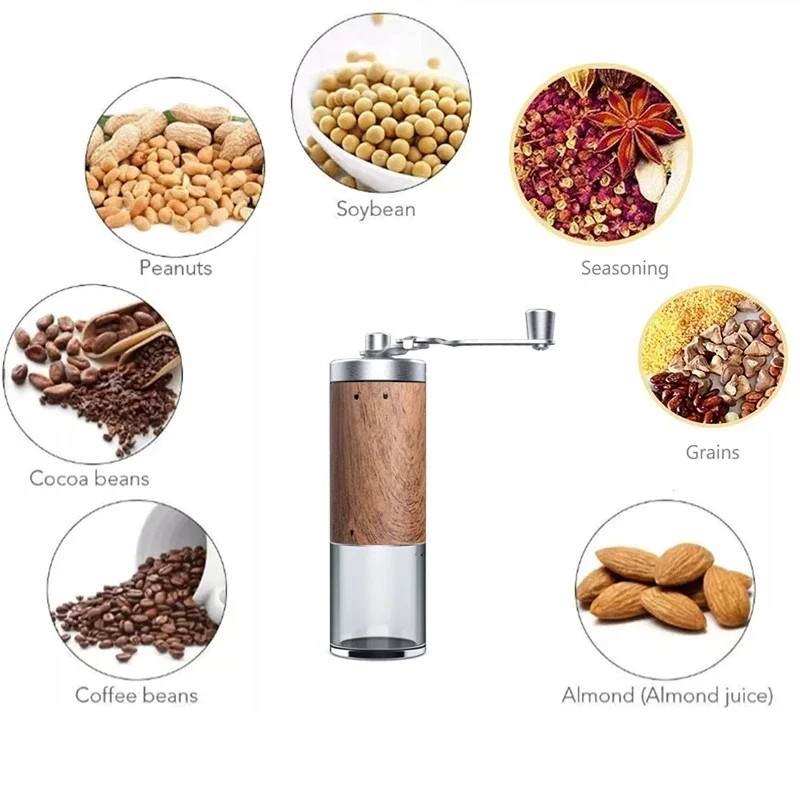Introduction
Every cup of coffee tells the story of its journey—from farm to cup. But there’s an often overlooked chapter in this story: your grinder’s cleanliness. That residue building up inside your coffee grinder isn’t just unsightly—it’s actively sabotaging your brew’s flavor profile. Studies suggest that neglected grinders can cause up to 25% flavor deterioration, turning what should be a bright, complex coffee experience into something flat and disappointing.
Whether you’re a daily coffee enthusiast or occasional spice grinder, understanding proper cleaning frequency is the hidden key to unlocking the full potential of your ingredients. The science is clear: oils released during grinding oxidize over time, stale particles accumulate, and these unwanted elements find their way into your next batch.
In this guide, we’ll explore exactly how often you should clean your grinder, why it matters so deeply for flavor preservation, and how the precision grind settings for espresso can be maintained through proper care. Let’s uncover the cleaning routine that will transform your daily ritual.
Why Regular Grinder Cleaning is Essential for Flavor Preservation
The Science of Flavor Contamination
Coffee beans and spices contain natural oils that are fundamental to their flavor profiles. When ground, these oils are released and cling to your grinder’s components—burrs, chambers, and chutes. Unlike fresh oils which contribute delicious flavor notes, these oils turn rancid through oxidation within days, introducing unpleasant bitter, soapy, or cardboard-like flavors to fresh grounds.
Beyond oils, tiny particles of coffee or spices become trapped in grinder crevices. These stale remnants mix with fresh grounds, muddying flavor clarity and diluting the bright, vibrant notes that make specialty coffee special. For coffee enthusiasts who treasure delicate flavor notes, this contamination is particularly devastating—those floral, fruity, or chocolate undertones become muted or disappear entirely.
Impact on Grind Consistency and Extraction
A dirty grinder doesn’t just impact flavor through contamination—it affects mechanical performance too. Residue buildup creates resistance between burrs, potentially altering the ultimate espresso grind size you’ve carefully calibrated. This inconsistency leads to uneven extraction, where some particles over-extract (creating bitterness) while others under-extract (creating sourness).
For precision brewing methods like espresso, even slight variations in grind consistency can dramatically affect taste outcomes. When burrs can’t properly align due to buildup, the resulting inconsistent particle size distribution undermines all other careful preparation steps.
Cross-Contamination Concerns
Using the same grinder for different coffee varieties or spices introduces another dimension of flavor interference. Residual Ethiopian Yirgacheffe notes might clash with your Brazilian Santos, or worse—yesterday’s cumin might find its way into today’s morning coffee. This cross-contamination becomes particularly problematic with strongly flavored beans (like artificially flavored varieties) or potent spices that leave persistent aromatic compounds behind.
Regular cleaning creates a blank canvas for each new ingredient, allowing its unique characteristics to shine without interference from previous use.
The Optimal Cleaning Timeline: Frequency Guidelines for Every User
Establishing a consistent cleaning routine prevents flavor degradation while extending your grinder’s lifespan. Follow this tiered approach based on your usage patterns:
Daily Quick Clean (2 minutes)
- After Each Use: Brush out visible grounds from the grinding chamber using a small, dedicated brush
- Wipe External Surfaces: Remove fingerprints and coffee dust from the exterior with a dry cloth
- Tap To Release Trapped Particles: Gently tap the grinder to dislodge grounds clinging inside
This simple daily habit prevents immediate buildup and ensures each batch starts clean.
Weekly Maintenance (5-10 minutes)
- Hopper Cleaning: Remove and wash the bean hopper (if detachable) with mild soap and water, drying thoroughly
- Thorough Brushing: Clean burrs or blades more thoroughly using a grinder brush to reach crevices
- Ground Bin/Drawer: Empty completely and wipe with a dry cloth
- Exterior Wipedown: Clean all external surfaces with an appropriate cleaner for your grinder’s material
Weekly maintenance prevents oil accumulation before it becomes problematic and maintains consistent grind quality.
Monthly Deep Clean (15-30 minutes)
- Burr Removal: If possible and manufacturer-approved, remove burrs for thorough cleaning
- Cleaning Tablets: Run specialized grinder cleaning pellets like Urnex Grindz through the machine
- Thorough Burr Brushing: Clean all surfaces of the burrs with a dry brush
- Reassembly: Carefully reassemble all components to manufacturer specifications
Monthly cleaning reaches areas that daily and weekly cleanings miss, removing oils before they turn rancid.
Quarterly/Bi-Annual Overhaul (30-45 minutes)
- Full Disassembly: Take apart all removable components according to manufacturer instructions
- Deep Cleaning: Clean each part individually, focusing on oil buildup areas
- Inspection: Check for worn parts that might need replacement
- Calibration: Upon reassembly, recalibrate grinder settings for optimal performance
This thorough cleaning restores like-new performance and removes stubborn buildup that affects flavor quality.
For coffee enthusiasts seeking optimal performance, our manual coffee burr grinders are designed with materials and construction that facilitate easier cleaning and maintenance while delivering exceptional grind quality.
Customizing Your Cleaning Schedule: Factors That Influence Frequency
While general guidelines provide a helpful framework, your specific situation may require a customized approach. Consider these factors when determining your ideal cleaning schedule:
Usage Intensity
The more you use your grinder, the more frequently it needs cleaning:
* Heavy Daily Use (multiple times/day): Increase cleaning frequency by approximately 50%
* Occasional Use (1-2 times weekly): May extend intervals between deep cleanings
* Commercial Settings: Require daily deep cleaning and weekly thorough maintenance
Bean and Ingredient Characteristics
Different coffee beans and ingredients leave varying amounts of residue:
- Dark Roasts: Contain up to 30% more surface oils than light roasts, requiring approximately 40% more frequent cleaning
- Flavored Coffees: Artificial flavorings leave persistent residues requiring immediate cleaning after use
- Oily Spices (like cardamom or star anise): Need more thorough cleaning than dry spices
- Light Roasts: While less oily, their bright flavors are more susceptible to contamination from old residue
Grinder Design and Materials
Different grinder types have unique cleaning requirements:
- Burr Grinders: More complex internal pathways require methodical cleaning but typically have accessible components
- Ceramic vs. Steel Burrs: Ceramic burrs may be more porous and retain more oils than steel
- Flat vs. Conical Burrs: Flat burrs often trap more grounds in horizontal surfaces
- Blade Grinders: Simpler to access but cleaning is critical as oils collect in the grinding chamber
Proper grind adjustment for perfect espresso depends heavily on maintaining clean burrs, as residue can prevent precise setting calibration.
Environmental Factors
Your local environment plays a surprising role in cleaning requirements:
- Humidity: Higher humidity environments (above 60%) accelerate oil rancidification, requiring up to 30% more frequent cleaning
- Temperature: Warmer storage locations increase the rate of oxidation
- Altitude: Can affect bean density and oil expression during grinding
Warning Signs: How to Tell Your Grinder Needs Cleaning
Don’t wait for a schedule if you notice these warning signs that cleaning is overdue:
- Flavor Deterioration: Coffee tastes flat, dull, cardboard-like, or unusually bitter
- Unusual Aromas: Rancid, musty, or “old” smells from the grinder
- Visible Residue: Oily sheen or caked particles on burrs or in the grinding chamber
- Inconsistent Grind Size: Unexpected powder or chunks appearing in otherwise uniform grounds
- Increased Static: Grounds clinging excessively to surfaces due to oil buildup
- Grinding Resistance: Motor strain or difficulty turning manual grinders
- Longer Grinding Time: The same amount of coffee taking longer to grind
- Strange Noises: Grinding sounds becoming louder or changing pitch
If you notice any of these signs, it’s time for an immediate deep clean, regardless of your regular schedule. For specific cleaning techniques tailored to hand grinders, our guide to cleaning manual coffee grinders provides detailed instructions.

Essential Grinder Cleaning Tools and Methods
Equipping yourself with the right tools makes regular cleaning quick and effective:
Daily Cleaning Essentials
- Dedicated Grinder Brush: Soft bristles that reach crevices without damaging components
- Microfiber Cloth: For exterior wiping without scratching
- Rubber Blower/Air Puffer: Dislodges particles from hard-to-reach areas
Deep Cleaning Supplies
- Grinder Cleaning Tablets/Pellets: Specially formulated products like Urnex Grindz that absorb oils and clean burrs
- Small Screwdriver Set: For disassembly (check manufacturer instructions first)
- Soft Bristle Brushes: Various sizes for different components
- Food-Safe Bristle Brush: For stubborn residue removal
- Compressed Air: For difficult-to-reach areas (use cautiously)
Safe Cleaning Methods
- Dry Cleaning Only: Never submerge electrical components or expose burrs to water
- Tablet Cleaning Process: Run grinder cleaning tablets through like coffee beans, followed by a small amount of disposable coffee to remove tablet residue
- Brush Cleaning: Use brush in circular motions to remove grounds from burrs
- Disassembly Method: Follow manufacturer guidelines for safe disassembly sequence
Cleaning Methods to Avoid
- Water Exposure: Can cause rust on metal components and damage electrical parts
- Harsh Chemicals: Can affect flavor and potentially damage grinder materials
- Dishwasher: Even for “removable parts” unless specifically dishwasher-safe
- Rice Method: While popular, uncooked rice can be too hard for some burr grinders, potentially causing damage
Our selection of hand burr grinders features designs that facilitate easier cleaning while maintaining premium grinding performance.
Expert Techniques for Maximum Flavor Preservation
Beyond basic cleaning, coffee professionals employ these advanced strategies:
The Purge Technique
Before brewing, discard the first 2-3 grams of coffee ground after changing beans. This small sacrifice removes any stale coffee remaining in the grind path from previous use, ensuring flavor purity.
Single-Dosing Approach
Measuring exact bean quantities for each brew rather than filling the hopper reduces the time beans spend exposed to air and minimizes oil transfer to the grinder. This approach significantly reduces residue buildup over time.
Bean Preparation
Sorting beans to remove defects and foreign objects before grinding prevents contamination and protects grinder components. Some professionals even use static-reducing techniques like adding a few drops of water to beans (Ross Droplet Technique) to prevent grounds from sticking to surfaces.
Strategic Burr Seasoning
New burrs benefit from “seasoning” with inexpensive beans before use with quality coffee. This smooths microscopic burr edges and creates a beneficial coffee oil coating that improves performance.
Specialized Grinders for Different Uses
Dedicated grinders for different coffee types prevent flavor cross-contamination. Even having separate grinders for espresso vs. filter coffee ensures optimal performance for each brewing method.
For consistent results, understanding how espresso grind settings affect shot quality is essential, as is maintaining clean burrs to ensure those settings remain accurate.
Fine Adjustment Hand Grinder, Precision Manual Grinder, Travel Coffee Grinder
Price range: $185.11 through $494.63 Select options This product has multiple variants. The options may be chosen on the product pageHand Burr Grinder, Hand Crank Coffee Grinder, Manual Espresso Grinder, Portable Coffee Grinder
Price range: $262.72 through $300.22 Select options This product has multiple variants. The options may be chosen on the product pageManual Burr Mill, Manual Coffee Grinder Stainless Steel, Manual Coffee Mill Grinder, Mechanical Coffee Grinder
Price range: $127.26 through $130.32 Select options This product has multiple variants. The options may be chosen on the product pageHand Burr Grinder, Manual Coffee Grinder Stainless Steel, Precision Manual Grinder
Price range: $183.64 through $187.52 Select options This product has multiple variants. The options may be chosen on the product page

The Impact of Cleaning Frequency on Different Brewing Methods
Each brewing method reveals grinder cleanliness issues in different ways:
Espresso
Espresso brutally exposes any grinder maintenance shortcomings. The high pressure and concentrated nature of espresso extraction amplifies flavor flaws from dirty grinders. Even minor residue can cause channeling during extraction, resulting in sour or bitter shots. Clean grinders allow for the precise grind settings necessary for perfect shots.
Pour-Over Methods
Pour-over brewing highlights clarity and distinct flavor notes that can be easily muddied by old coffee oils. The slow extraction process draws out subtle contamination that might be less noticeable in other methods. Proper grinder cleaning helps maintain the bright acidity and delicate floral notes prized in pour-over coffee.
French Press and Immersion Methods
The extended contact time in immersion brewing means that any rancid oils from dirty grinders have more time to affect flavor. While the metal filter may mask some inconsistencies in grind size, it cannot hide the stale, cardboard flavors imparted by neglected cleaning.
Cold Brew
The lengthy extraction process of cold brew (12-24 hours) means any contamination has ample time to influence flavor. While cold brew’s lower acidity may mask some flaws, the clean, smooth character that makes cold brew appealing quickly deteriorates with grinder neglect.
How Does Grinder Design Impact Cleaning Requirements?
Grinder design significantly influences cleaning needs and methods:
Burr Geometry Differences
- Flat Burrs: Tend to trap more grounds horizontally between burr surfaces, requiring more frequent cleaning to prevent compacted grounds
- Conical Burrs: Generally easier to clean as grounds naturally fall downward, though they have more surface area where oils can accumulate
Material Considerations
- Steel Burrs: Less porous, often easier to clean completely, but can rust if exposed to moisture
- Ceramic Burrs: More porous and may absorb more flavors over time, but are rust-resistant and often found in our ceramic burr coffee grinders
Design Features That Help or Hinder Cleaning
- Accessible Burrs: Grinders with easily removable burrs significantly simplify the cleaning process
- Antistat Features: Reduce coffee grounds clinging to surfaces
- Straight Grinding Paths: Minimize areas where grounds can become trapped
- Minimal Retention: Less coffee remains in the grinder between uses
The relationship between heat generated during grinding and flavor also affects cleaning needs, as higher temperatures can cause oils to become more fluid and penetrate deeper into grinder components.
Can Improper Cleaning Damage Your Grinder?
While regular cleaning is essential, incorrect methods can cause harm:
- Water Damage: Exposing burrs or electrical components to water can cause rust, electrical shorts, or motor damage
- Disassembly Risks: Improper reassembly can lead to burr misalignment, affecting grind consistency
- Aggressive Scrubbing: Can damage precision burr edges, altering grind quality
- Incorrect Cleaning Agents: Harsh chemicals can damage materials and leave harmful residues
- Warranty Voids: Some cleaning methods may void manufacturer warranties
Always consult your grinder’s user manual before attempting disassembly or using any cleaning products beyond those explicitly recommended.
Are Specialized Grinder Cleaning Products Worth the Investment?
Coffee grinder cleaning products typically cost between $10-20 for a supply that lasts several months. Consider these factors when deciding if they’re worth it:
Benefits of Specialized Products
- Oil Absorption: Products like Grindz specifically target and absorb coffee oils that regular brushing might miss
- Safe Abrasion: Provide gentle cleaning action without damaging burrs
- Time Efficiency: Often faster than complete disassembly
- Reach: Clean areas difficult to access manually
Effective Alternatives
- Food-Safe Rice: For some grinders (primarily blade types), uncooked rice can absorb oils effectively
- Stale Bread Pieces: Softer than rice and can absorb oils without risking burr damage
- Dry Brushing: Regular, thorough brushing can be effective with consistent application
For most serious coffee enthusiasts, specialized cleaning products provide value through convenience and effectiveness, but consistent manual cleaning can achieve similar results with more effort.

Conclusion
The relationship between grinder cleanliness and coffee flavor is not merely theoretical—it’s fundamental. A consistent cleaning routine directly translates to improved flavor clarity, extended equipment life, and a more satisfying coffee experience. By adopting a personalized cleaning schedule based on your usage patterns, bean types, and grinder design, you establish the foundation for exceptional brewing.
Remember that the warning signs we’ve discussed—from flavor deterioration to grinding inconsistency—signal the need for immediate attention. The investment in proper cleaning tools and occasional deep cleaning pays tremendous dividends in cup quality.
At Savor Suite, we believe that precision manual grinders deserve attentive care that preserves their engineering excellence. By implementing the cleaning frequencies and methods outlined in this guide, you’ll ensure every cup showcases the full potential of your coffee beans, free from the interference of stale remnants from brews past.
Frequently Asked Questions
Is the rice cleaning method safe for all grinders?
No. While effective for blade grinders, rice can be too hard for some burr grinders, potentially causing damage to the burrs or motor. Manufacturer-approved cleaning tablets are generally a safer option for burr grinders.
How often should I clean my grinder if I only use it once a week?
For weekly users, a thorough brush cleaning after each use and a deeper clean with grinder tablets monthly is typically sufficient. Quarterly disassembly cleaning is still recommended as oils can oxidize even during periods of non-use.
Do new grinders need to be cleaned before first use?
Yes. Manufacturing residues and dust can be present in new grinders. A thorough brushing of all components before first use is recommended, followed by grinding and discarding a small amount of coffee to “season” the burrs.
How do I remove stubborn coffee buildup from my grinder?
For persistent buildup, specialized grinder cleaning tablets often work well. If buildup remains after tablet cleaning, gentle scraping with a wooden toothpick (nothing metal) can help remove stubborn residue without damaging burrs.
Does espresso grinding require more frequent cleaning?
Yes. The finer grind required for espresso creates more surface area and releases more oils, leading to faster buildup. Espresso grinders typically benefit from 30-50% more frequent cleaning than those used for coarser methods.
Should I clean my grinder differently for flavored coffees?
Absolutely. Clean your grinder immediately after grinding flavored coffees, as their oils contain concentrated flavor compounds that readily transfer to subsequent batches. Consider dedicated grinders if you regularly use flavored coffees.







